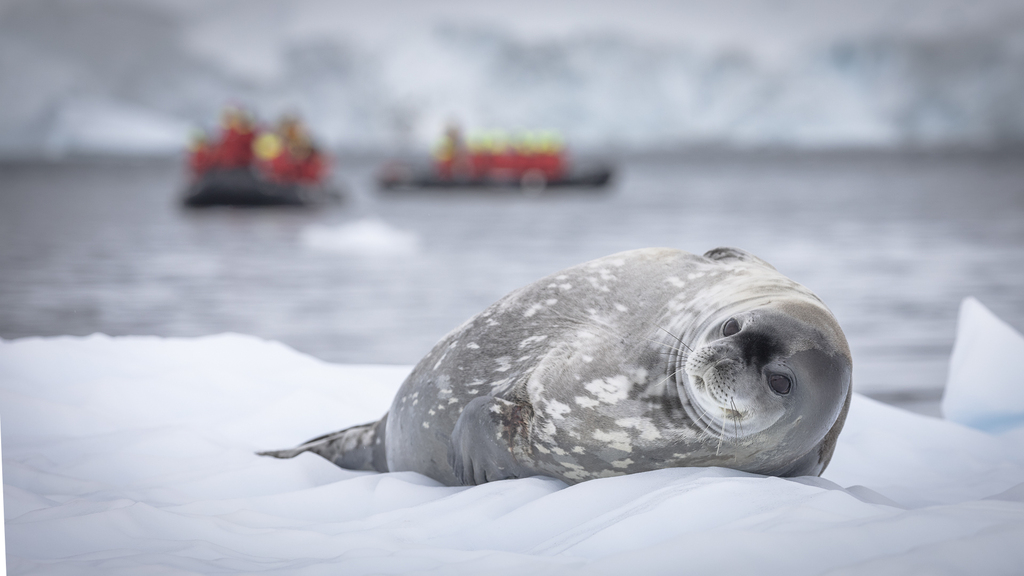This article is about R packages that are relevant to Antarctic and Southern Ocean science. It includes packages in various states of maturity, including some in planning or very early stages of development. Antarctic and Southern Ocean science covers a diverse range of topics within the geosciences, life sciences, physical sciences, and humanities and social sciences. This article is not intended to be an exhaustive list of packages that are relevant to all of those fields, but rather a synopsis of packages that are for one reason or another of particular interest to Antarctic and Southern Ocean researchers. The definition of “particular interest” is of course largely arbitrary. Packages listed here are generally expected to be at a useful stage of development, or if not, are seeking engagement/input from the wider community.
Contributions are welcome! Please submit an issue, or make a contribution (see the contribution guidelines). If you have an issue with one of the packages discussed below, please contact the maintainer of that package. Many thanks to contributors, including Scott Chamberlain, Michael Sumner, Grant Humphries and Hsun-yi Hsieh
Taxonomic Data
The Register of Antarctic Marine Species (RAMS) is the authoritative taxonomic database for Antarctic marine organisms. RAMS is part of the World Register of Marine Species (WoRMS).
- worrms client for the WoRMS API. Contains mostly taxonomic data, but also trait data.
- taxize provides access to 20ish sources of taxonomic data sources, including WoRMS. It has consistent data outputs and function interfaces across the different data sources so that you don’t need to tailor your code to different taxonomic data providers.
RAMS is currently being extended to cover non-marine taxa, which will become the Register of Antarctic Species (RAS). Hopefully this will remain covered by worrms and the server-side infrastructure hosted by VLIZ. There is also the biotaxa package in development for working with RAS (visualising and predicting the growth in taxonomic diversity over time).
For more detail on R packages dealing with taxonomy in general, see the rOpenSci taxonomy task view.
Mapping
Mapping is a very common task, and in an Antarctic/Southern Ocean context brings with it particular issues including dealing with projection properties at high latitudes, coping with data that crosses the 180°E line, adding commonly-desired features such as ocean fronts, management boundaries, sea ice extent, stations and other geographic features, and common contextual layers such as bathymetry.
- SOmap is in development, but aims to provide straightforward mapping functions for Southern Ocean (polar stereographic) maps, along with commonly-used management and contextual layers such as MPA boundaries and ocean fronts.
- antanym provides geographic place name data from the SCAR Composite Gazetteer of Antarctica, with plans to extend the coverage to subantarctic and informal gazetteers at a later date.
- orsifronts provides the commonly-used Orsi et al. (1995) definitions of the major Southern Ocean fronts.
- graticule creates graticule lines (lines of longitude and latitude) and labels for maps.
- palr provides colour palettes for data, based on some well known remotely sensed data sets for sea ice concentration, sea surface temperature and chlorophyll- a .
- there is some Antarctic-related mapping functionality in prtools, atlasr, CCAMLRGIS, and sospatial.
Environmental Data
- blueant and its companion package bowerbird provide a mechanism to download a range of environmental data including satellite-derived sea ice, sea surface temperature, topography, ocean colour (chlorophyll- a ), and meteorological data from various providers. Many of these data sets can be read and manipulated with raster and similar packages: the spatial task view is a good resource here.
- the PolarWatch project aims to enable data discovery and broader use of high-latitude ocean remote sensing data sets. The dedicated ERDDAP server (https://polarwatch.noaa.gov/erddap) is accessible to R users with rerddap.
- rsoi downloads the most up to date Southern Oscillation Index, Oceanic Nino Index, and North Pacific Gyre Oscillation data.
Oceanography
- satellite reflectance data are a common basis for estimating chlorophyll- a and other phytoplankton parameters at ocean-basin scales. Global products are widely available; however, Southern-Ocean specific algorithms are likely to provide better estimates in these regions. croc implements the Johnson et al. (2013) Southern Ocean algorithm.
- more broadly, oce provides a wide range of tools for reading, processing, and displaying oceanographic data, including measurements from Argo floats and CTD casts, sectional data, sea-level time series, and coastline and topographic data.
- fda.oce provides functional data analysis of oceanographic profiles for front detection, water mass identification, unsupervised or supervised classification, model comparison, data calibration, and more.
Biodiversity data
- robis for marine data, rgbif for global biodiversity data. spocc wraps these and other occurrence data providers with a consistent interface (but not necessarily the full functionality of provider-specific packages, where they exist).
- obistools and scrubr for quality-checking occurrence data.
- a package for the data behind the Mapping Application for Penguin Populations and Projected Dynamics (MAPPPD) is in planning: contact Grant Humphries.
- diet data sohungry and allometric equations solong
Animal tracking
Tracking of animals using satellite, GPS, or light-level geolocation tags is common, and there are many R packages that can help with this. See the spatiotemporal task view for a more complete list. Of particular interest may be:
- TwilightFree provides a method for processing light-level geolocation data that is robust to noise (sensor shading and obscuration) and may be particularly suitable for Southern Ocean applications.
Miscellaneous
Packages that may be of interest but don’t yet fit neatly into another category.
- distancetocoast provides “distance to coastline” data for longitude and latitude coordinates.
